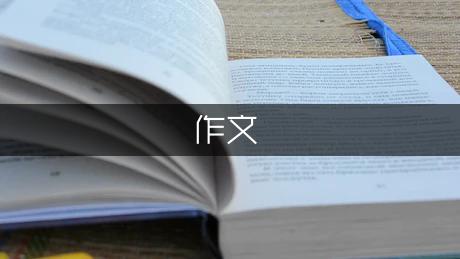(点击右键“另存为”可下载语音)
Model Test Five? Part I Listening Comprehension (20 minutes) Directions: In this section, you will hear 10 short conversations. At the end of each conversation, a question will be asked about what was said. Both the conversation and the question will be spoken only once. After each question, there will be a pause. During the pause, you must read the four choices marked A), B), C), and D), and decide which is the best answer. Then mark the corresponding letter on the Answer Sheet with a single line through the center.

A) Jungle. B) Library. C) Theatre. D) Zoo.
A) The man will follow her. B) She has too much work. C) No work is due the next day. D) She promised herself.
A) Any kind of boat. B) Being away from home. C) Her. D) Activities on the water.
A) There'll be heavy rain in places. B) There'll be heavy snow in places. C) There'll be a strong wind. D) There'll be fog in all places.
A) Her sister works at the bakery. B) The man is no judge of cakes. C) She's surprised the man thinks she can cook. D) Her sister bakes delicious cakes.
A) He'll tell her what she's missed. B) He'll give her the new exam dates. C) He'll take her to the next class. D) He'll try to bring her homework to class.
A) Roger was too short. B) Roger was absent. C) Many people stood around him. D) Roger was late.
A) Rest for one hour. B) Take a bus ride. C) Go to her dorm for a rest. D) Have a rest for a few hours.
A) Because she didn't like the color. B) Because it was too expensive. C) Because it didn't fit her. D) Because it wasn't her style.
六级考前突破训练(2)2
(点击右键“另存为”可下载语音)
Model Test Two
Part I: Listening Comprehension (20 minutes)
Directions: In this section, you will hear 10 short conversations. At the end of each conversation, a question will be asked about what was said. Both the conversation and the question will be spoken only once. After each question, there will be a pause. During the pause, you must read the four choices marked A), B), C), and D) and decide which is the best answer. Then mark the corresponding letter on the Answer Sheet with a single line through the center.
A. Play the piano B. Learn to sing? C. Keep her company D. Teach her to sing?
A. The man's B. The woman's C. The classmate's D. Her own?
A. The coat B. The color C. The tie D. The shirt?
A. Search for a pen B. Fix a shelf? C. Paint the shelves D. Write the letter?
A. Weekdays B. Saturday C. Sunday D. Every day?
A. 5:45 B. 5:15 C. 6:15 D. 5:30?
A. $50 B. $25 C. $100 D. $30?
A. She is an American. B. She likes English? C. She lived in America until she was 13? D. Her family speaks English?
A. English B. Spanish C. Japanese D. Chinese?
Directions: In this section, you will hear 3 short passages. At the end of each passage, you will hear some questions. Both the passage and the questions will be spoken only once. After you hear a question, you must choose the best answer from the four choices marked A), B), C), and D). Then mark the corresponding letter on the Answer Sheet with a single line through the center.
Questions 11 to 13 are based on the passage you have just heard.
突破SAT阅读考试的方法3
第一招:化整为零做的快
“化整为零”也就是我们通常说的要将较长的文章分出几个部分进行理解。sat阅读理解部分最为常见的文章都是约有850个单词的长度,如果我们读完这80多行的文章然后就迅速做题是没有任何实际意义的。因为人的大脑不可能一下子吸收如此之多的信息,所以我们应该将文章按照其行文走势分成几个部分即化整为零,然后再集中精力针对文章的某一部分进行分析并回答问题。这就有效地防止了很多人“读了后面忘了前面”的阅读弊端。
第二招:掌握主旨方向准
“掌握主旨”就是要求我们能够对文章的主旨大意有清楚的认识和掌握。掌握主旨的好处首先体现在我们能够回答阅读理解中的主旨题。例如:whatisthemainideaofthepassage?whattheisbesttitleforthepassage?withwhichofthefollowingstatementswilltheauthormostlikelyagree/disagree?这些都是sat阅读理解中的常见主旨题的典型问法。其次掌握文章主旨还有利于从文章的整体上认识全文,防止“只见树木,不见森林”现象的发生。由于sat阅读文章考察的是考生的推理能力,这与托福雅思仅停留在语言理解层面上的阅读具有很大的区别,因此识别文章的主旨大意已经成为保证做题正确率的重要前提。我在课堂上经常把识别文章的主旨大意比作是大海行船的航向,不了解航向我们永远无法正确的达到预期的目标。
那么sat长篇阅读文章的主旨到底到哪里去找呢?这是我们理解文章并正确答题最为关键的一点。sat阅读理解部分的文章都是从正式出版发行的书籍,报刊等读物上面截取下来的学术*或文学*材料。出题者们经常是从一大篇文章中挑选出适合考察考生的片段,然后就把前面删减的部分进行压缩总结从而变成文章的斜体字部分和第一段;再把文章后面删减的部分总结压缩变成文章最后一段。在这里我们还要高度重视sat阅读理解里非常特别的一个特点,那就是文章开头的斜体字部分。这一部分给我们提供了大量的文章相关的背景信息,其实这本身也是出题者为了防止所选段落过于孤立而很难推断*所做的总结工作。因此,我们要想找到一篇sat长篇阅读文章(小说除外)的主旨就应该查找文章开头的斜体字部分,第一段和最后一段。
第三招:行数定位读得快
经过对sat阅读理解部分的观察和研究,我们不难发现,文章后面90%的题目都含有定位的行数。题目的这一特征为我们提高阅读速度提供了巨大的帮助。以前,有很多考生抱怨说做sat阅读时总是顾了读文章就没有时间做题或者顾了做题就不会有时间读懂文章。其实,考生大可不必为这个“读还是做”的难题而头痛,因为就是美国土生土长的高中生也无法完全读懂全文后再去做题。这些题目也没有要求我们百分百理解原文之后再去答题。因此,在最短的时间之内获取最多的信息就是我们再sat阅读中获胜的主要因素。
第四招:先易后难有层次
对于整个sat阅读理解部分来说,其考题主要分为三个层次:第一个层次就是上文提及到的referenceline和sidebar等细节*问题。第二个层次就是小范围内的推断题。这类题目以题干中的infer,suggest,imply等词汇为明显标志。这类题目要求我们能够站得高望得远并且要求我们具备把所读与所感结合起来的能力。也就是说我们要能够从理解文章的基础上得出高于文章内容的结论。第三个层次就是我们上面也提及过的文章主旨题。
针对这三个层次的题目我们是不可以顺水推舟从头做到尾的。我们要有选择的从细节题目出发然后再做小范围的推断题最后再做涵盖全文的主旨题。这样我们就可以层层相扣从更小范围的题目中得到大范围题目的相关提示信息。由此我们才会随着所作题目数量的增加而拥有一种豁然开朗的感觉。
第五招:“见风使舵”推敲准
如果说文章主旨题目有利于我们把握全文的方向那么作者在文中的态度和感情则是我们做对题目的小方向。除此之外,辨清作者的态度和感情还有利于我们做好感情态度题目,例如:whatistheauthor’sattitudeinparagraph3?等等类似的题目。当然即使出题者没有问我们文章某一部分作者的态度,我们也应该在阅读中充分体会作者的思想感情。因为只有这样我们才能够“见风使舵”找到出题者的最初的出发点从而自信的选出我们推断的结果。












